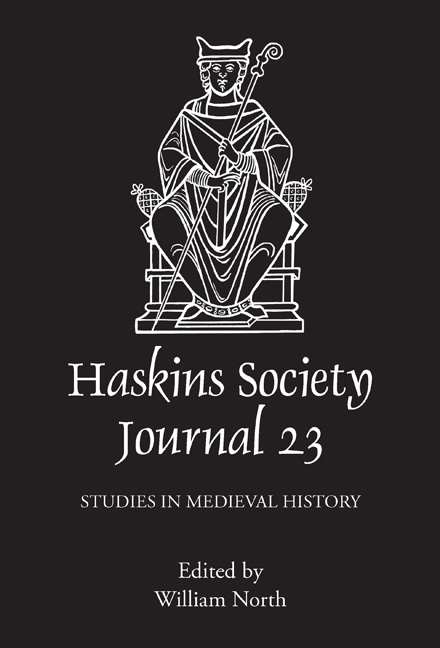32 results
Associations of alcohol and cannabis use with change in posttraumatic stress disorder and depression symptoms over time in recently trauma-exposed individuals
-
- Journal:
- Psychological Medicine / Volume 54 / Issue 2 / January 2024
- Published online by Cambridge University Press:
- 13 June 2023, pp. 338-349
-
- Article
-
- You have access
- Open access
- HTML
- Export citation
Bacterial species and antimicrobial resistance differ between catheter and non–catheter-associated urinary tract infections: Data from a national surveillance network
-
- Journal:
- Antimicrobial Stewardship & Healthcare Epidemiology / Volume 3 / Issue 1 / 2023
- Published online by Cambridge University Press:
- 20 March 2023, e55
-
- Article
-
- You have access
- Open access
- HTML
- Export citation
Psychological and actual group formation: Conflict is neither necessary nor sufficient
-
- Journal:
- Behavioral and Brain Sciences / Volume 45 / 2022
- Published online by Cambridge University Press:
- 07 July 2022, e105
-
- Article
- Export citation
A history of high-power laser research and development in the United Kingdom
- Part of
-
- Journal:
- High Power Laser Science and Engineering / Volume 9 / 2021
- Published online by Cambridge University Press:
- 27 April 2021, e18
-
- Article
-
- You have access
- Open access
- HTML
- Export citation
Socio-demographic and trauma-related predictors of depression within eight weeks of motor vehicle collision in the AURORA study
-
- Journal:
- Psychological Medicine / Volume 52 / Issue 10 / July 2022
- Published online by Cambridge University Press:
- 29 October 2020, pp. 1934-1947
-
- Article
- Export citation
Talking to others: The importance of responsibility attributions by observers
-
- Journal:
- Behavioral and Brain Sciences / Volume 41 / 2018
- Published online by Cambridge University Press:
- 27 March 2018, e46
-
- Article
- Export citation
Telephone-supported computerised cognitive–behavioural therapy: REEACT-2 large-scale pragmatic randomised controlled trial
-
- Journal:
- The British Journal of Psychiatry / Volume 210 / Issue 5 / May 2017
- Published online by Cambridge University Press:
- 02 January 2018, pp. 362-367
- Print publication:
- May 2017
-
- Article
-
- You have access
- HTML
- Export citation
Divorcing the puzzles: When group identities foster in-group cooperation
-
- Journal:
- Behavioral and Brain Sciences / Volume 39 / 2016
- Published online by Cambridge University Press:
- 07 March 2016, e23
-
- Article
- Export citation
Political diversity versus stimuli diversity: Alternative ways to improve social psychological science
-
- Journal:
- Behavioral and Brain Sciences / Volume 38 / 2015
- Published online by Cambridge University Press:
- 08 September 2015, e148
-
- Article
- Export citation
Abbreviations
-
- Book:
- The Haskins Society Journal 23
- Published by:
- Boydell & Brewer
- Published online:
- 05 November 2014
- Print publication:
- 17 April 2014, pp x-xiv
-
- Chapter
- Export citation

The Haskins Society Journal 23
- 2011. Studies in Medieval History
-
- Published by:
- Boydell & Brewer
- Published online:
- 05 November 2014
- Print publication:
- 17 April 2014
Frontmatter
-
- Book:
- The Haskins Society Journal 23
- Published by:
- Boydell & Brewer
- Published online:
- 05 November 2014
- Print publication:
- 17 April 2014, pp i-iv
-
- Chapter
- Export citation
Contents
-
- Book:
- The Haskins Society Journal 23
- Published by:
- Boydell & Brewer
- Published online:
- 05 November 2014
- Print publication:
- 17 April 2014, pp v-vi
-
- Chapter
- Export citation
List of Figures
-
- Book:
- The Haskins Society Journal 23
- Published by:
- Boydell & Brewer
- Published online:
- 05 November 2014
- Print publication:
- 17 April 2014, pp vii-viii
-
- Chapter
- Export citation
Editor's Note
-
- Book:
- The Haskins Society Journal 23
- Published by:
- Boydell & Brewer
- Published online:
- 05 November 2014
- Print publication:
- 17 April 2014, pp ix-ix
-
- Chapter
- Export citation
Contributors
-
-
- Book:
- Essentials of Global Mental Health
- Published online:
- 05 March 2014
- Print publication:
- 27 February 2014, pp x-xiv
-
- Chapter
- Export citation
Cost-effectiveness of cognitive–behavioural therapy as an adjunct to pharmacotherapy for treatment-resistant depression in primary care: economic evaluation of the CoBalT Trial
-
- Journal:
- The British Journal of Psychiatry / Volume 204 / Issue 1 / January 2014
- Published online by Cambridge University Press:
- 02 January 2018, pp. 69-76
- Print publication:
- January 2014
-
- Article
-
- You have access
- HTML
- Export citation
Contributors
-
-
- Book:
- Bringing Sociology to International Relations
- Published online:
- 05 October 2013
- Print publication:
- 03 October 2013, pp vii-viii
-
- Chapter
- Export citation
Symposium ‘The politics of international recognition’
-
- Journal:
- International Theory / Volume 5 / Issue 1 / March 2013
- Published online by Cambridge University Press:
- 21 March 2013, pp. 94-107
-
- Article
- Export citation
Contributors
-
-
- Book:
- ADHD in Adults
- Published online:
- 04 April 2011
- Print publication:
- 03 March 2011, pp vii-ix
-
- Chapter
- Export citation



